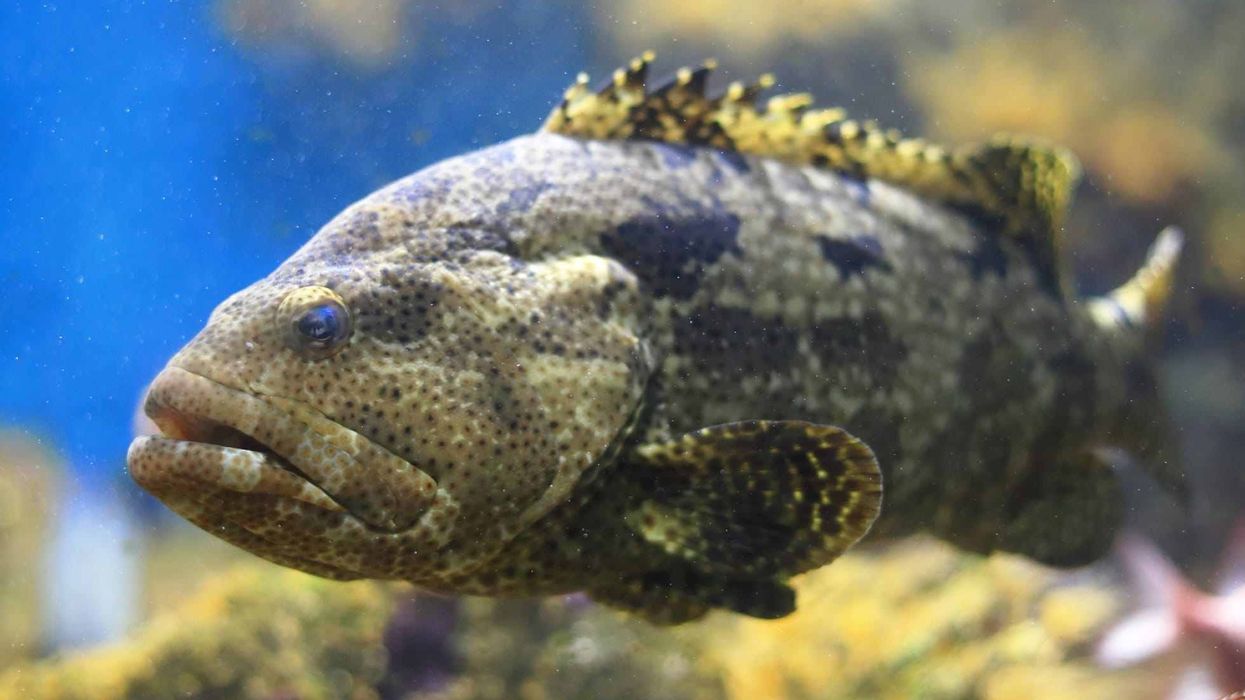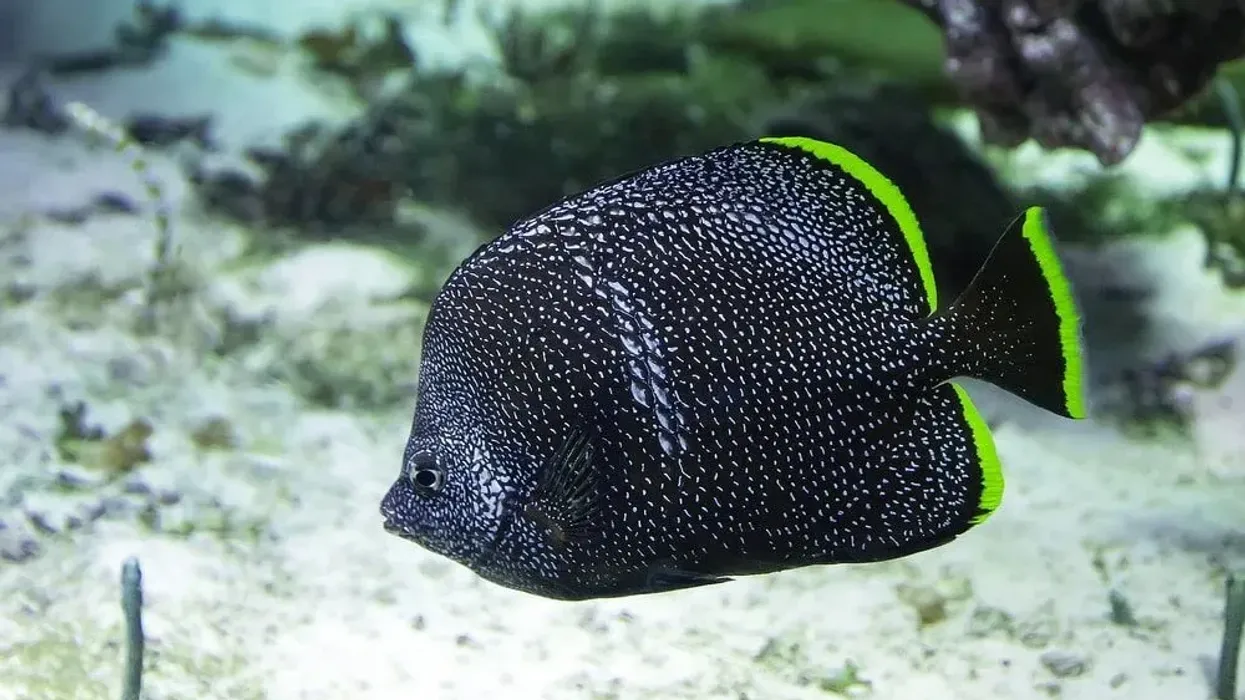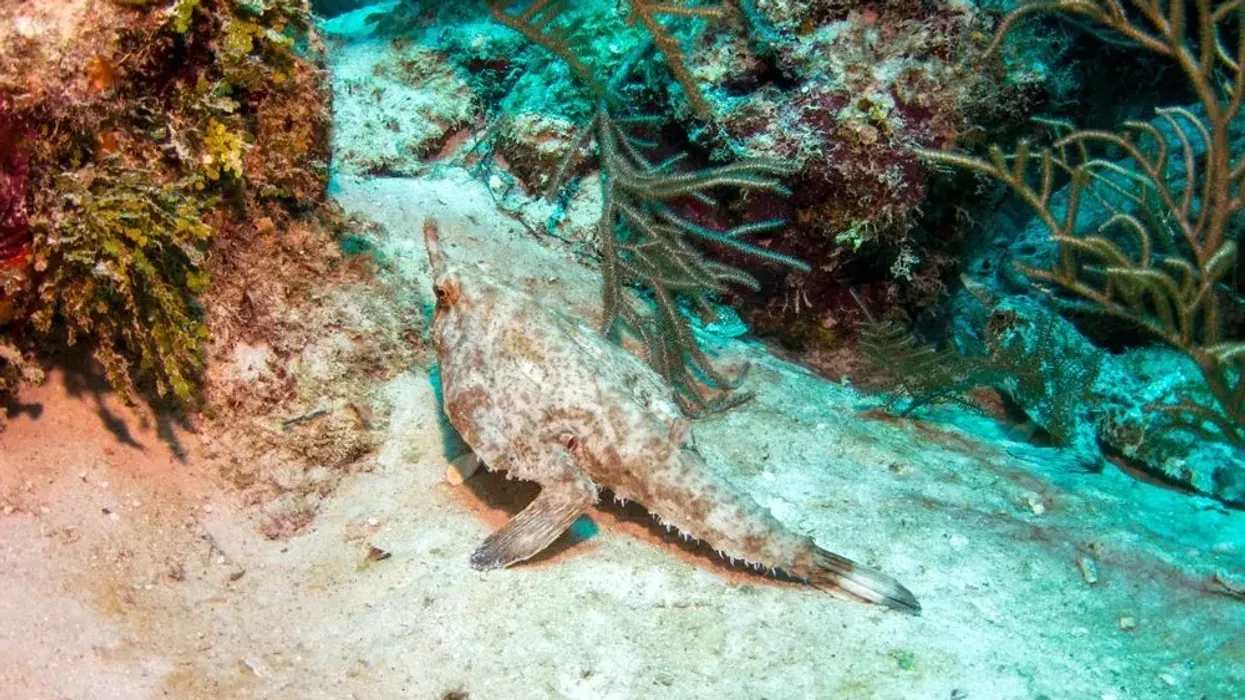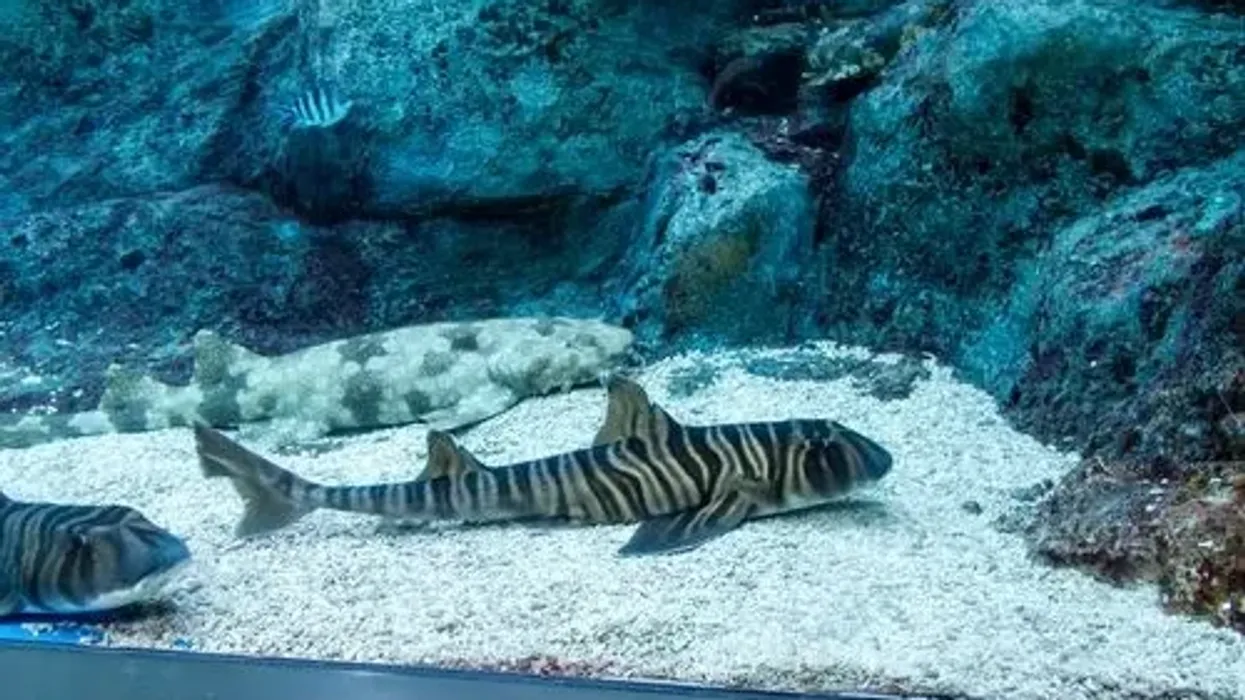The donkey fish, scientifically known as Dermatolepis inermis, belongs to the genus Dermatolepis. It is a marbled grouper fish. A grouper is a collection of numerous fishes that are bottom-dwelling, solitary, long fish.
They have yellowish-brown bodies, with irregular scars and blotches all over the body. Other members of marbled grouper are mutton hamlet, rockhind, and sickle fish grouper. These Dermatolepis inermis are local to the Western Atlantic Ocean from North Carolina to Rio De Janeiro.
Intensive fishing of these large bodies is the primary threat to the population of this species and is suspected to be endangered.
They are secretive and masking in coral reefs and attack their prey suddenly. The donkey fish is also a character in the famous game of donkey kong country and is called donkey kong country fish.
Furthermore, if the above content has engaged and interests you, we have great articles on herring facts and Mexican tetra facts.
Donkey Fish Interesting Facts
What type of animal is a donkey fish?
The donkey fish of the genus Dermatolepis is a fish. It is a marbled grouper fish of the Serranidae family.
What class of animal does a donkey fish belong to?
The Dermatolepis inermis is a marine ray-finned fish, and it belongs to the class Actinopterygii.
How many donkey fish are there in the world?
The marbled grouper species population is distributed in two segments, from North Carolina to Venezuela and north of Brazil to Rio De Janeiro. Most of the time, the juveniles are also caught in fishing.
And because of this fish's secretive nature, it hides in the rocks and caves of the ocean reefs, so, the exact population of the donkey fish in the world is not known.
Where does a donkey fishes live?
The marbled grouper donkey fish lives in oceans. Their populations are distributed over the Western Atlantic Ocean from the southeastern coast of North Carolina to the Bahamas. It is also local to northwestern Cuba across Alabama and the Flower garden banks. They also spread its captivity from Cuba to Tobago in the Caribbean Sea and Guanaja Island in Honduras.
In South America, it ranges from the Santa Marta coast in Colombia and from Sao Luis to Sao Paulo in Brazil.
What is a donkey fish's habitat?
The donkey fish or other marbled groupers like the mutton hamlet usually inhabit the deep surfaces or ocean bed. They can live at a depth of 820 ft (249.9 m) and can also be found at 10 ft (3.05 m) in the sea or ocean.
They are also regional to territorial water of salt domes in the northern Gulf. They reside near the coral reef of deep ledges in the ocean.
Who does donkey fish live with?
The donkey fish is a solitary animal, and it mostly tends to hide away from its threat or any confrontation.
How long does a donkey fish live?
The marbled grouper species life span in the deep ocean coral reef can reach 40 years.
How do they reproduce?
The reef donkey fish reproduce by spawning. This grouper fish is protogynous hermaphrodite, where the singleton evolves to be a female and transforms to male in later stages.
The Serranidae family fish produce a large number of eggs. Though the studies indicate that these animals lay a total of 7,000,000 eggs post-spawning, very little is known about how many of these eggs hatch into larvae and mature into juveniles. Juveniles are dark brown to black, and they have irregular white blotches distributed all over the body.
What is their conservation status?
No established data is available regarding the population count of donkey fish. However, the International Union for Conservation of Nature estimated these fish population conservation status as Data Deficient due to lack of information. Extensive fishing of these inermis species fish could also be the reason for this evaluation.
Large populations of these fish get caught in the traditional artisanal fisheries. However, fisheries like scissor net and fyke nets are being banned due to their destructive methods.
Donkey Fish Fun Facts
What do donkey fish look like?
The Dermatolepis inermis is a robust largemouth fish like all members of the Serranidae family. They have small spines on their gill coverings. A pair of sharp and large canine teeth protrude from the lower jaw. The donkey fish is twice as in weight, majorly pounded at dorsal fin and gradually flattening laterally towards the tail.
As these ray-finned fish are a combination of spines and rays, their dorsal fin is contained by 11 spines and 18-20 soft rays, and the cloacal spin has three rays and eight to nine soft rays. Thus, the pectoral fin of these fish is significantly large.
They have a yellowish-brown body with great small dark spots spread along with the fins, body, and head. Also, the head and body are coated with pale blotches. The highest length record of these fish is 36 in (91.44). They can attain weight up to 22 lb (9.9 kg).

How cute are they?
The very sight of this animal could be unpleasant to the human eye as the body is scattered with irregular patterns and scars like blotches. These grouper fish have dense flesh, and they exhibit secretive, sedentary, and solitary behavior. They are predatory and are not social.
How do they communicate?
Donkey fish are solitary animals. They communicate only during spawning as they form gatherings.
How big is a donkey fish?
The donkey fish has a typical length of approximately 20 in (50 cm), and reaches a maximum length of 36 in (91 cm). It is thrice as big as the mutton hamlet of the marbled grouper. It is a bully fish.
How fast can a donkey fish swim?
Groupers are sedentary fish. Their anatomy is not suitable for fast swimming.
How much does a donkey fish weigh?
The donkey fish's maximum recorded weight is 22 lb (10 kgs).
What are the male and female names of the species?
The male and female of the donkey fish family are called male donkey fish and female donkey fish.
What would you call a baby donkey fish?
The baby donkey fish is called a juvenile.
What do they eat?
These predatory fish feed on fish and invertebrates like crustaceans like shrimp. Grouper fishes do not bite the prey but swallow it. They do not swim fast to chase the prey but instead wait for it to cross by.
Are they poisonous?
Though certain groupers like brown marbled groupers can be toxic, the marbled groupers are edible and are not dangerous. However, like brown marble grouper, the other grouper is toxic and can have adverse effects when eating them.
Would they make a good pet?
Dermatolepis inermis is a hiding predator and not social as well. So it not ideal for adapting this fish as a pet for aquariums as it is harmful to other fish in it.
Did you know...
The donkey inermis is referred to as Western Atlantic species.
The juveniles of these animals disguise amid the spines of sea urchins.
During the spawning time, the marbles groupers form aggregations, which is an added advantage to fishermen.
Marbled grouper animals are secret predators. They hide in the coral reefs and attack prey passing by.
Other members of the marbled grouper, the mutton hamlet, are found at the sea bases.
Interestingly the amberjack, a game fish, is also known as reef donkeys as it hovers along the reef, and its nature is as stubborn as a donkey. These amberjack fish do not have teeth.
It is a sea donkey fish. These are called sea donkey fish because it is challenging to catch these fish during fishing. Even fishers with great technologies cannot get hold of these stubborn animals.
How much does fish donkey cost?
As the fish meat is bulky, low in calories, and healthy, these fishes demand high market prices.
Do humans eat them?
Groupers, in general, demand high market prices for the quality of flesh. Donkey fish is edible to humans. It is one of the extensively targeted grouper species in fish trading.
It is highly recognized in northern European countries. It is served as a smoked fish haddock. Though its concentrated flesh involved lots of cooking, it is low in calories, reasonably healthy, and readily available on the market.
Here at Kidadl, we have carefully created lots of interesting family-friendly animal facts for everyone to discover! For more relatable content, check out these silver dollar fish facts and tang fish facts pages.
You can even occupy yourself at home by coloring in one of our free printable donkey fish coloring pages.









